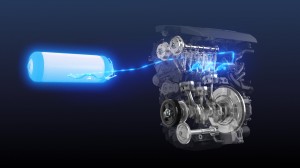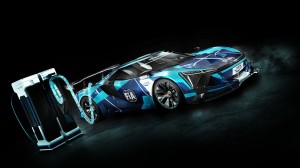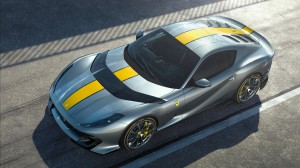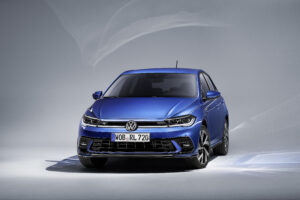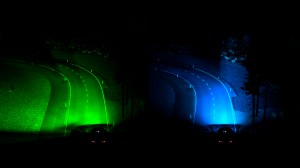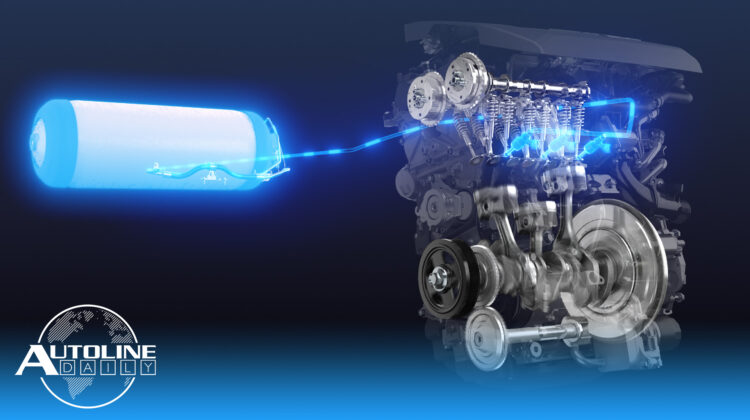

Listen to “AD #3064 – Repair Costs Were Down Last Year; Toyota Developing Hydrogen-Powered ICE; Volkswagen Shows New Polo” on Spreaker.
Follow us on social media:
Runtime: 10:02
0:07 Biden Announces Global Climate Summit
0:37 EV Automaker’s Stocks Jump
1:10 Repair Costs Down Last Year
2:50 Toyota Teams with Chevron on Hydrogen Economy
3:15 Toyota Takes Hydrogen-Powered ICE Racing
4:08 New EV Racing Series Under Development
6:00 Ferrari Shows Special Edition 812 Superfast
7:31 Volkswagen Reveals New Polo
8:04 Ford Makes Driving at Night Easier
Visit our sponsors to thank them for their support of Autoline Daily: BorgWarner, Bridgestone, Intrepid Control Systems and ZF.
This is Autoline Daily, the show dedicated to enthusiasts of the global automotive industry.
BIDEN ANNOUNCES GLOBAL CLIMATE SUMMIT
We’re hearing war drums on the Potomac. There’s a steady drum beat in Washington DC to go to war against climate change. Yesterday we reported that 12 states are urging President Biden to ban the internal combustion engine after 2035. The President then announced he’s holding a global summit to get the world to slash CO2 emissions. And he committed the United States to cut carbon emissions in half by the end of this decade.
EV AUTOMAKER’S STOCK JUMPS
Well, Wall Street took that news to heart and jumped all over the stock of EV automakers. Fisker shot up 17%. Canoo was up 12% and XL Fleet was hot on its heels. Lucid posted a nearly 8% gain and even Nikola was up more than 6%. We know everyone’s going to ask, so Tesla was up just over 3%. Investors may be holding back a bit because of all the backlash Tesla is getting in China.
| Close | $ Change | % Change | |
|---|---|---|---|
| Fisker | $15.15 | +$2.22 | +17.2% |
| Canoo | $8.61 | +$0.96 | +12.5% |
| XL Fleet | $6.82 | +$0.71 | +11.6% |
| Lucid | $19.89 | +$1.44 | +7.8% |
| Nikola | $10.29 | +$0.64 | +6.6% |
REPAIR COSTS WENT DOWN LAST YEAR
New and used car prices are soaring. But repair costs are down slightly, according to CarMD. It’s annual Vehicle Health Index looks at repair costs and trends. Repair costs averaged just under $380, a drop of 1.6% compared to 2019. Labor costs fell nearly 3% and parts costs were down 1% as well. CarMD says the drop to the economy, competition among repair shops and more do-it-yourself repairs due to the pandemic drove that down. But the drop will be short lived. Part prices are expected to increase because of supply chain issues caused by lockdowns. They also looked at the increase in catalytic converters being stolen for its precious metals. In 2019, an average of 283 catalytic converters were stolen every month but last year it skyrocketed to 1,203 a month.
TOYOTA TEAMS WITH CHEVRON ON HYDROGEN ECONOMY
We know Toyota is bullish on fuel cells and in North America it signed a deal with Chevron to build out the hydrogen economy. The two plan to work on public policy to develop the infrastructure, figure out demand for light- and heavy-duty applications and R&D transportation and storage solutions. The goal is to make a large scale, profitable business around hydrogen.
TOYOTA TAKING HYDROGEN-POWERED ICE RACING
But that’s not all that’s up Toyota’s hydrogen sleeve. It also developed a hydrogen-powered ICE engine that it’s going to take racing. It’s a turbocharged 3-cylinder unit that features a modified fuel and injection system to handle the compressed hydrogen. Like any new technology that’s first tried out in racing, Toyota hopes to accelerate its understanding of the setup by putting it through an extreme environment. A few of the benefits include a faster combustion rate compared to gasoline and, other than a small amount of emissions from oil burning off, the engine emits zero CO2 when in use. Toyota will use the engine in a race version of the Corolla Sport and its first race is a 24-hour event that kicks off on May 21st.
NEW EV RACING SERIES UNDER DEVELOPMENT
The FIA, the governing body for many racing events, says a new all-electric racing series is under development and it just revealed the specs for the cars. They’ll be similar to the current generation of GT3 cars, like you see from Porsche, Ferrari and Aston Martin, but they’ll have better acceleration and qualifying times. This means that existing GT3 cars will be able to be converted to electric power and raced in the series. The FIA will also open the category to anyone else as long as the vehicle fits in the class. It will be nice to see an all-electric race where all the vehicles don’t look the same. And because the vehicles come in different shapes and sizes the powertrain and battery pack will be bespoke as well. The cells will be provided by Saft, a subsidiary of Total, but teams will be able to build their own layouts with a maximum capacity of 87 kWh. Cars will be expected to charge during pit stops, but they’ll only have to go to 60% and thanks to 700 kW fast charging it’ll only take a little more than 4 minutes to do that. Manufacturers can choose between 2- or 4-motor setups, with both 2- and 4-wheel drive allowed, but total power can’t exceed 450 kW. Bring it all together into a package with a minimum weight of 1490 to 1530 kg or about 3300 to 3400 pounds and these suckers will do 0-100 km/h in 2.4 seconds and have a top speed of 300 km/h or about 185 MPH. Sounds like it could be a good watch.
FERRARI SHOWS SPECIAL EDITION 812 SUPERFAST
Here’s another car that’s going to feel right at home on a race track. It’s a special edition of the Ferrari 812 Superfast. At the heart of this beast lurks a V12 engine that’s been tuned to make nearly 820 horsepower and rev to 9,500 RPM. Both figures are the highest for any road-going Ferrari ever. To help harness and keep that power in-line, the car adopts 4-wheel steering. We think the most distinguishing styling features are that carbon fiber blade that stretches across the hood and an aluminum panel with louvers that replaces the rear window. But you’ll notice a number of other carbon fiber components inside and out as well as a more aggressive rear spoiler. Ferrari says it will release the car’s name along with more information on May 5th during a live streamed event.
VOLKSWAGEN REVEALS NEW POLO
Volkswagen introduced the new Polo earlier today. The front and rear styling has been updated, which features new LED head and taillights. On the inside, a digital instrument cluster with an 8-inch display is now standard. Other standard equipment includes air conditioning, Bluetooth, and heated and electrically adjusted mirrors. The new Polo is also available with predictive adaptive cruise control and lane assist. Customers in Europe can begin pre-ordering the new model next month.
FORD MAKES NIGHT TIME DRIVING EASIER
Ford of Europe is developing new technology to help make night time driving easier. It previously used road signs and lane markings as cues to adjust headlights to better illuminate the road. Now, it’s using GPS data, advanced technologies and street geometry information to identify turns in the road ahead. An algorithm calculates the direction and speed of the vehicle to automatically adjust the headlights to light up the road, including turns and cross roads. If GPS data is not available the system will still work by using cameras and steering input to adjust the lights. The technology is still in the prototype phase, so no word on when it will be available.
Be sure to tune into Autoline After Hours today. Our guest is Deborah Mielewski, who’s in charge of sustainability at Ford. Christie Schweingsburg from Wards Intelligence and Lindsay Brooke from SAE will also be on the show. Other topics include the backlash against Tesla in China, how more EVs in China could consume more coal, and whether or not General Motors is backtracking on its commitment to electric cars. So join John and Gary for some of the best insights into what’s going on in the global automotive industry.
And with that we wrap up today’s show, thanks for watching.
Thanks to our partner for embedding Autoline Daily on its website: WardsAuto.com

John McElroy is an influential thought leader in the automotive industry. He is a journalist, lecturer, commentator and entrepreneur. He created “Autoline Daily,” the first industry webcast of industry news and analysis.






